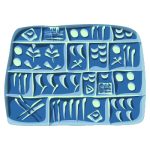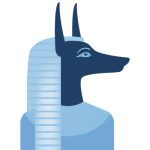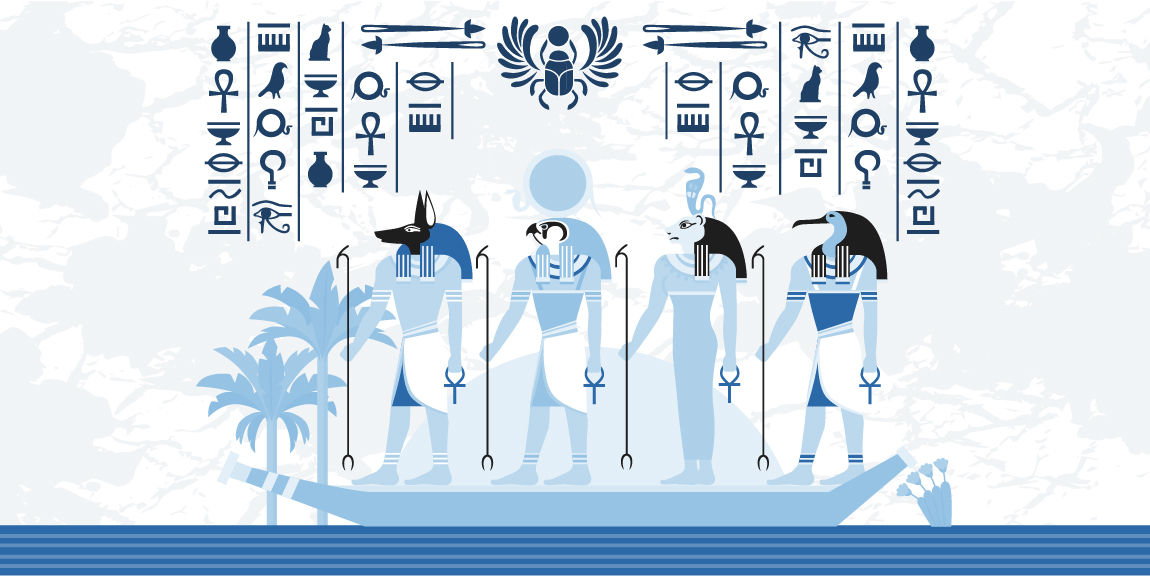Egyptian hieroglyphs, a captivating script from millennia past, illuminate aspects of daily life, sacred inscriptions, and religious manuscripts of Ancient Egypt. The analysis of these complex symbols has been crucial in uncovering the mysteries of a distant time, attributed to the dedication of scholars such as Thomas Young, Jean-François Champollion, and Mark Collier. In this blog, we venture into the domain of Egyptian hieroglyphics, arming you with the essential knowledge needed to start deciphering these enigmatic symbols.
A Journey Through Time: The History of Egyptian Writing
Hieroglyphics, or “sacred carvings,” are one of the most well-known forms of ancient scripts. They have been used for thousands of years, with the earliest hieroglyphic inscriptions dating back to the 4th century BCE. Egyptian hieroglyphs were employed on various mediums, from public monuments to sacred writings, such as religious texts, providing valuable insights into the culture and history of Ancient Egypt.

The Basics of Egyptian Hieroglyphs
Egyptian hieroglyphs utilize picture writing, incorporating symbols that embody objects, concepts, and phonetics. This script encompasses an array of hieroglyphic signs, with each designated a particular role. These signs include not only the familiar symbols, which represent objects, but also phonetic symbols, which denote sounds.
To read Egyptian hieroglyphics, it’s essential to understand that they can be both logographic and phonetic. Some symbols represent whole words or concepts, while others stand for individual sounds. These symbols were used in conjunction to convey meaning.
The Hieroglyphic Alphabet and Its Variations
The hieroglyphic script includes a wide array of symbols, making it a complex system to master. Nevertheless, there are certain key elements that can help you get started. Hieroglyphs consist of both logograms and phonetic signs. Logograms represent entire words or ideas, while phonetic signs indicate the sounds that make up those words.
The Egyptian scripts can be broadly categorized into three main forms:
- Hieroglyphic script: The most well-known form, consisting of intricate pictorial symbols.
- Hieratic script: A cursive form of hieroglyphic writing, used for day-to-day purposes.
- Demotic script: A more simplified, cursive script that developed later in ancient Egypt.
Deciphering the Code: The Work of Early Scholars
Significant advancements in the study of Egyptian hieroglyphics were achieved in the 19th century, largely due to the contributions of two pivotal figures: Thomas Young and Jean-François Champollion.
– Thomas Young, an English physicist, significantly advanced the field by suggesting that certain hieroglyphic signs could have phonetic properties, a revolutionary insight for that era.
– Jean-François Champollion, a French scholar, is often credited with the decipherment of hieroglyphics. His pivotal breakthrough came when he successfully deciphered the famous Rosetta Stone, a stele inscribed with a Greek inscription alongside Egyptian hieroglyphs and demotic script. This provided a crucial key for understanding hieroglyphics, as it allowed him to identify phonetic components.

Getting Started with Egyptian Hieroglyphs
To start your journey into reading Egyptian hieroglyphics, here are some essential steps:
- Learn the Hieroglyphic Alphabet: Begin by familiarizing yourself with the hieroglyphic symbols, both logographic and phonetic.
- Understand the Context: Egyptian hieroglyphs often appear in various contexts, so understanding the subject matter can provide important clues.
- Focus on Phonetic Components: Learn to identify the phonetic signs and their corresponding sounds, as this approach will assist in deciphering the language.
- Practice: As with mastering any language, consistent practice is essential. Begin with straightforward hieroglyphic texts and progressively tackle more intricate inscriptions.
- Utilize Resources: There are numerous books and online resources available, such as “How to Read Egyptian Hieroglyphs” by Mark Collier and Bill Manley, published by the University of California Press.
Delving into Egyptian hieroglyphics presents an engaging journey across human history, uncovering the secrets of Ancient Egypt and fostering our connection with a civilization that prospered thousands of years in the past. Through this exploration of a sophisticated writing system, we cultivate a profound respect for the elaborate and diverse culture of this ancient society.Whether you’re an aspiring Egyptologist or simply curious about the past, Egyptian hieroglyphs offer a unique window into a bygone era.
FAQs
Egyptian hieroglyphics are a system of writing developed by the ancient Egyptians around 3200 BCE. They consist of a complex set of symbols, including logograms, alphabetic elements, and determinatives, used primarily for religious texts, decrees, and monumental inscriptions.
The Rosetta Stone, discovered in 1799, was pivotal in deciphering Egyptian hieroglyphics. It contained a decree written in three scripts: hieroglyphic, Demotic, and Greek. Jean-François Champollion, leveraging his knowledge of Coptic and the Greek text, deciphered hieroglyphics in 1822, unlocking the language after nearly 1,500 years.
Egyptologists use a variety of tools to read hieroglyphics, including dictionaries, grammars, computer software for digital epigraphy, and databases of known texts and inscriptions. Additionally, knowledge of related ancient languages like Coptic can aid in understanding.
Indeed, hieroglyphics are versatile in their orientation, capable of being inscribed and interpreted from left to right, right to left, or top to bottom. This directional flow hinges on the way human and animal figures within the script are oriented, with their gazes directed toward the text’s commencement.








